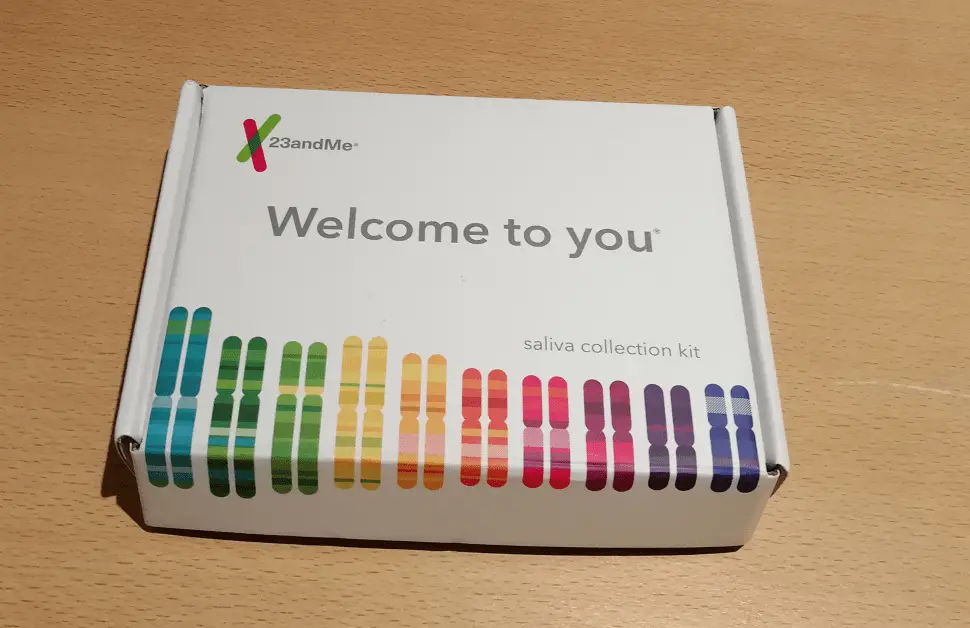Key Takeaways:
💡 23andMe provides three unique DNA testing kits for home use: The Ancestry Kit + Traits Service, the Health + Ancestry Service, and the VIP Health + Ancestry Kit.
💡 Recognized for its precision in testing outcomes, 23andMe excels at offering insights into health predispositions and genetic information.
💡 DNA tests decode genetic material by pinpointing distinct genetic markers and mapping ancestry through mitochondrial DNA and the Y chromosome.
💡 Through its assessments, 23andMe examines autosomal DNA, maternal and paternal haplogroups, and delivers comprehensive insights on ancestry breakdown, Neanderthal heritage, visual ancestry charts, connections to DNA relatives, and evaluations for various traits, genetic health risks, and wellness factors.
💡 The health reports from 23andMe include data on carrier status, wellness, health predispositions, and genetic traits.
💡 It’s important to understand that a DNA test offers an algorithm-based analysis and is not a substitute for an official health diagnosis, hence consulting a healthcare professional for genetic queries is advised.
Using a home DNA kit to uncover new details of your genetic makeup can be the beginning of a fascinating journey of improved health and self-discovery. With so many kits now readily available to the everyday consumer, choosing the best option for you may feel somewhat overwhelming. Understanding how DNA testing works, what you can expect to learn about your genetics through this kind of testing, and which test is ideal for your unique situation is key. This comprehensive review has been created to help you navigate the complex waters of DNA testing and to help you decide if the 23andMe is your best bet. If you’re uncertain which of the two big DNA companies is better, here is my comparison post, Ancestry vs 23andMe.
If you want to find out right now which is the best DNA test according to my research:
About 23andMe Company

Knowing the origins of a DNA testing company can help you better understand what you’ll get with one of their products. The 23andMe company was founded in 2006 by Paul Cusenza, Anne Wojcicki, and Linda Avey for individual consumer genetic testing. Based in Sunnyvale California, 23andMe is well known for its comparatively accurate test results and ability to provide information to consumers concerning their health based on specific genetic predispositions.
Many people choose to use 23andMe to learn more about their health and genetic ancestry. This company offers three different DNA home testing kits:
- The Ancestry Kit + Traits Service
- Health + Ancestry Service
- VIP Health + Ancestry Kit
The 23andMe company is a top competitor in the mainstream genetic home testing industry and offers customers access to detailed DNA testing with an emphasis on customer service, accurate genetic tracing, inherited traits, health, and wellness.
Family History Today
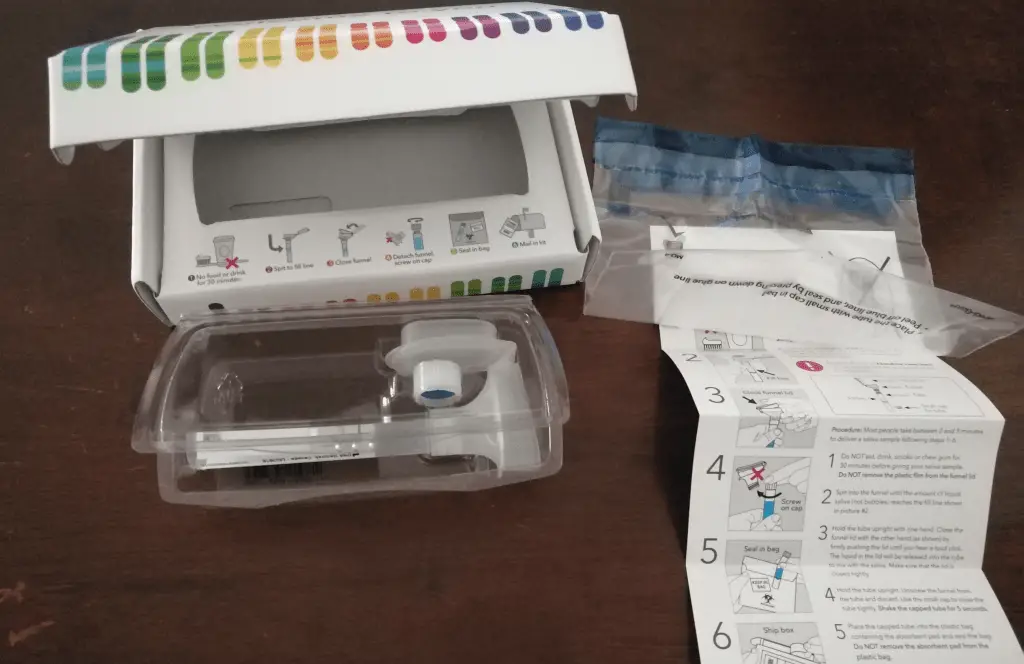
Before we go any deeper into the specifics of the 23andMe home DNA test, it may be helpful to go over how DNA testing works and what you can expect to learn from any given DNA test. Over the last three decades, DNA testing has become more readily available to the general public. As we put increasing emphasis on societal progress, health problems, and cultural history, it’s only natural that our civilization would become more curious about individual ancestral past and genetic makeup.
Understanding How DNA Testing Works
A DNA test is carried out by digitally analyzing a DNA saliva sample of genetic material (today this will usually be a saliva swab) and identifying specific genetic code markers. This genetic information is broken down into a string of A’s, C’s, T’s, and G’s called nucleobases of DNA. Additionally, your ancestry can be traced through mitochondrial DNA and the Y chromosome which are also markers found in the genetic code of DNA. The Y chromosome comes from the paternal male line which allows genetic mapping of your father’s side of the family tree. Mitochondrial DNA allows for the tracking of genetic markers through your mother’s side of the family members.
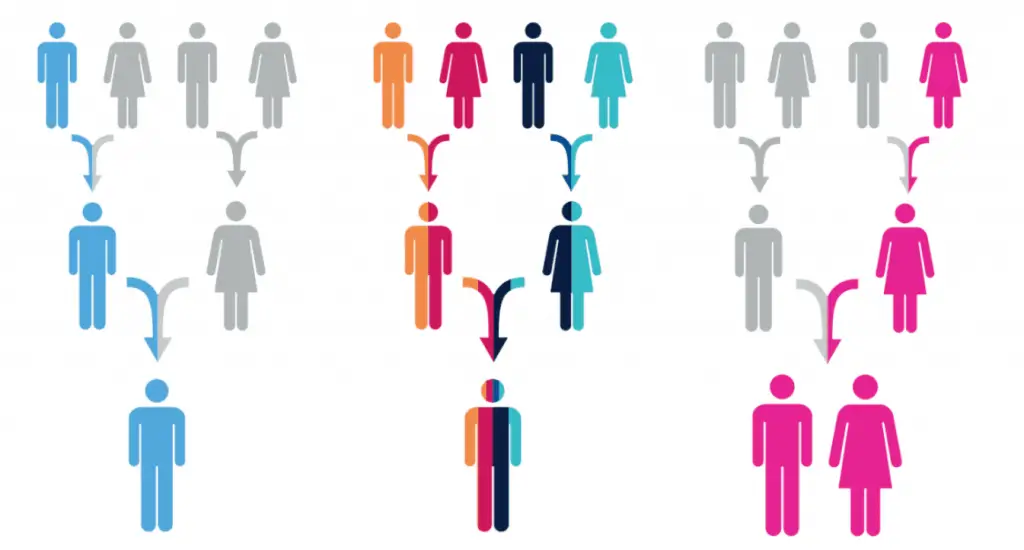
When a testing company identifies mitochondrial DNA, the Y chromosome, and the nucleobase of DNA simultaneously, a clear genetic picture and ancestral lineage map will usually begin to emerge. This genetic coding can then be compared to extensive DNA libraries (reference population) to identify ethnicity, genetic traits, disease predisposition, ancestral lineage, and more. The 23andMe company offers testing kits that identify all of these genetic code markers in samples. They also use patented algorithms to compare code samples with their large DNA database to give users an extremely accurate DNA analysis.
23andMe Review
There are a few features offered by 23andMe that differentiate it from other mainstream DNA testing companies. Primarily, 23andMe tests not only your autosomal DNA, but also your mtDNA, and your yDNA (if you’re male). This may sound a bit confusing, but it really comes down to the part of a DNA sample tested and how those genetic results can help you identify specific genetic traits as well as assist you in tracking your ancestral history. Let’s dive into how this works a bit deeper below.
• Ancestry Composition and Ancestry Reports
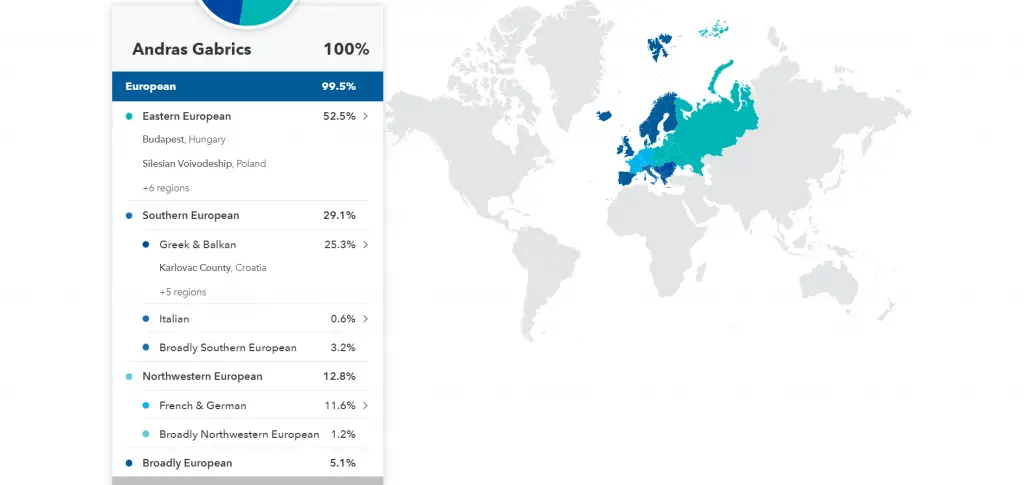
Ancestry tracking through genetics is most commonly accomplished through autosomal testing. Autosomal DNA tests help you track DNA that has been inherited from both sides of your family. Autosomal DNA samples are digitized and are then compared to other DNA samples by the use of algorithms. Thus, an individual can trace their relationship to other people through seven generations, which can be up to 200-300 years in history. Many DNA testing facilities with an ancestry focused marketing strategy only test autosomal DNA. 23andMe uses autosomal DNA, maternal, and paternal haplogroups. This means that they can provide you with DNA results that are more in-depth.
• Maternal and Paternal Haplogroup (mtDNA and y-DNA) Testing
23andMe takes DNA testing further than most other companies by offering their users maternal and paternal haplogroup testing. You may be wondering what this means. A maternal haplogroup (mtDNA) and a paternal haplogroup (yDNA) are blood lineage groups that can be discovered by specific methods of DNA analysis. This means that this kind of testing can help you discover information about ancestors that may have lived thousands of years ago based on their lineage (aka their haplogroup). It’s important to note that only men can be tested for y-DNA.
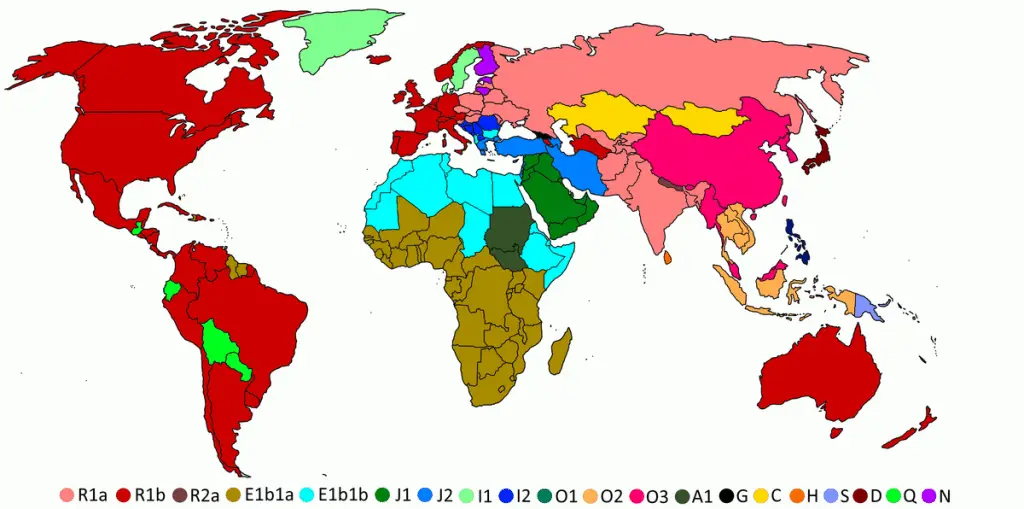
• Neanderthal Ancestry
Maternal and paternal haplogroup DNA testing lets you learn about your neolithic ancestry as opposed to just learning about your ethnicity or more modern historic ancestral lineage. This means that you’ll have an in-depth look at where your most ancient relatives may have lived during Neolithic periods. Additionally, you’ll be able to see Neanderthal migration patterns and may even discover how many different Neanderthal variants you carry in your DNA.
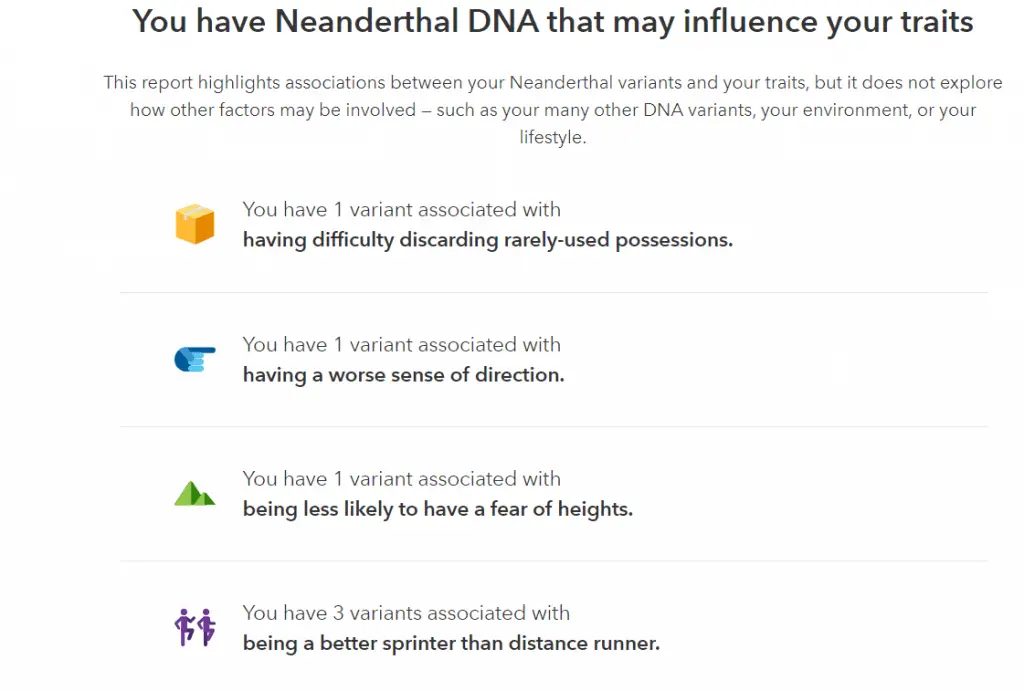
• Visual Representations
With the 23andMe test, you’ll also get a visual map of your ancestry timeline and what they call a Chromosome Painting. These visual genetic representations make reading and understanding your DNA composition a simpler and more entertaining undertaking. Additionally, they offer a unique chromosome browser that can be utilized for target DNA comparison with other DNA relatives. This allows you to easily browse through individuals that you are related to based on your DNA results.
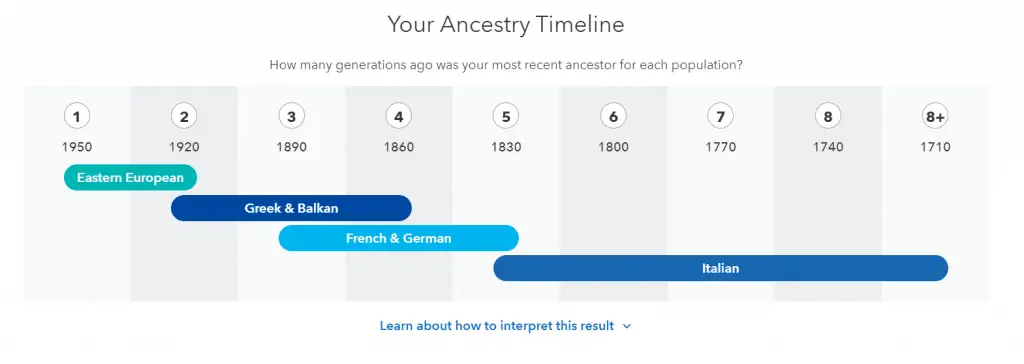
• DNA Relatives
With 23andMe, you will have access to their DNA database and you’ll get all the DNA matches and relatives. Their database is one of the largest so it is highly probable to find new relatives with their service.
• DNA Testing for Traits, Genetic Health Risks, and Wellness
If you’re interested in DNA testing for health, 23andMe may be worth considering. They have a comparatively large DNA database and offer users in-depth results through their genetic health reports which have been targeted specifically toward improving health wellness. The 23andMe health report can show you carrier status, give you a wellness report, offer you an in-depth health predisposition report, and also offers a genetic traits report.
Remember, a DNA test is simply an algorithmic analysis based on your DNA against existing data, not an official health diagnosis. You should always seek the advice of an actual medical practitioner about any genetic ailments that concern you.
• Carrier Status Reports
Your carrier status report offers you information on diseases or conditions you are likely to carry based on your DNA. You can look at a sample report here.
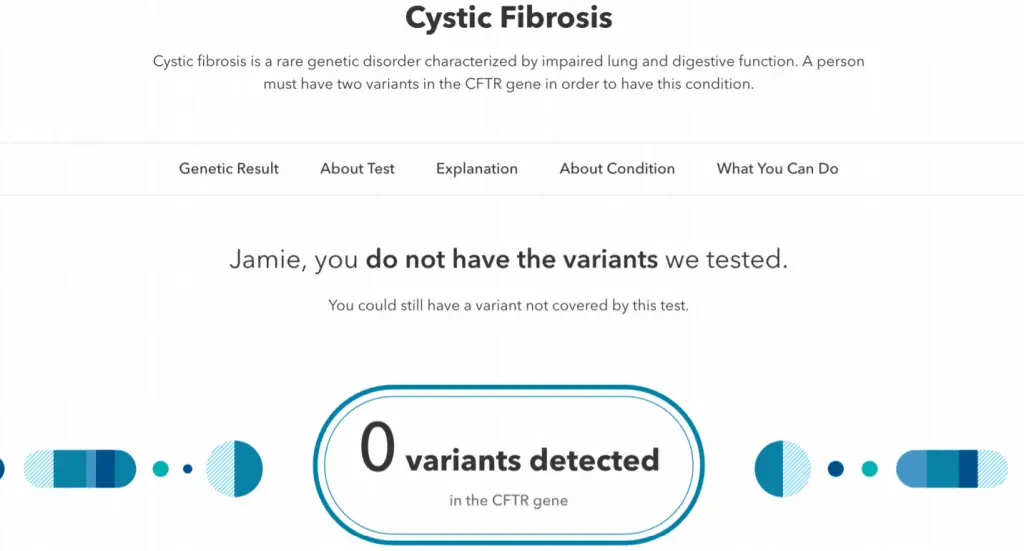
• Wellness Report
Your wellness report can show you things like your alcohol flush reaction, genetic weight, lactose intolerance, muscle composition, saturated fat retention and weight, and even your sleep movement. You can check out a sample report here.
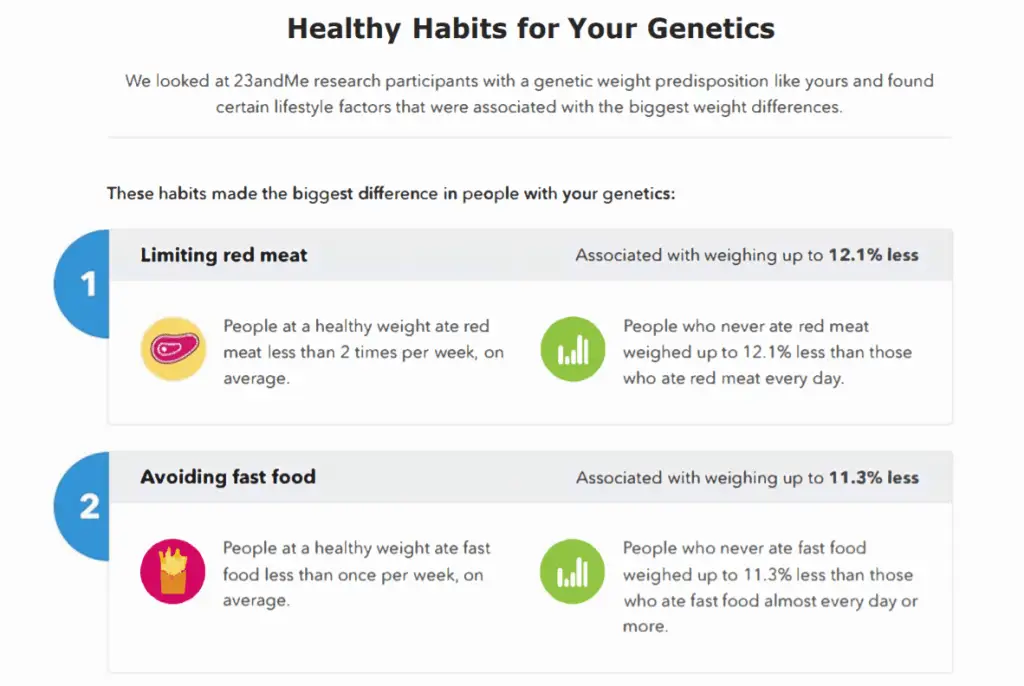
•Health Predisposition Report
This allows some people access to information on genetically predisposed diseases (heart disease, breast cancer) and health conditions prevalent in their specific genetic line.
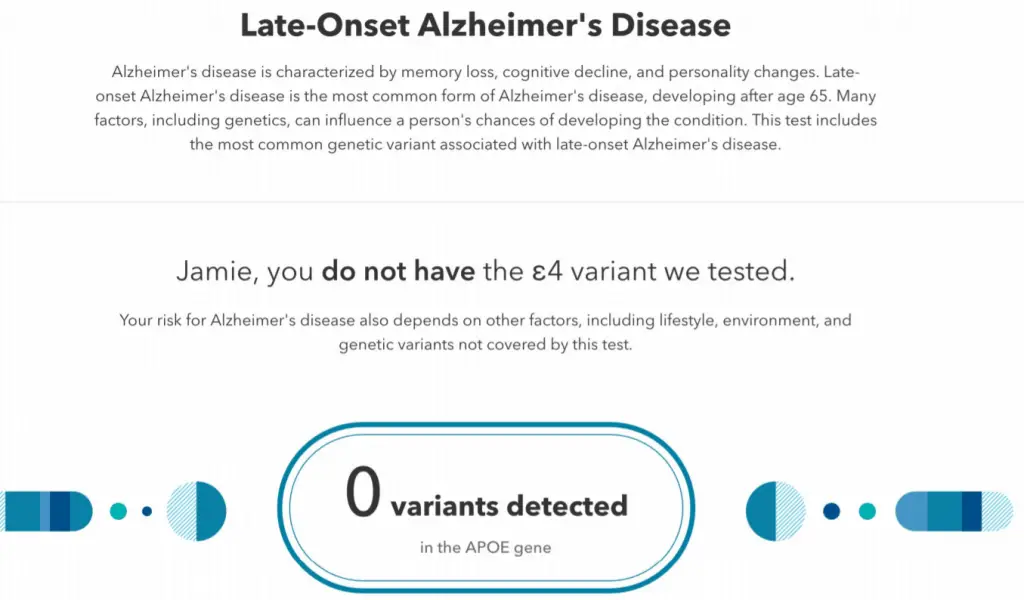
• Genetic Traits Report
The ancestry traits report offered by 23andMe can show you which traits you are likely to have inherited based on your genetic markers. This can show your likelihood to genetically inherit traits like:
- The Ability to Match Musical Pitch
- Asparagus Odor Detection
- Back Hair (available for men only)
- Bitter Taste
- Bunions
- Cheek Dimples
- Cilantro Taste Aversion
- Cleft Chin
- Dandruff
- Earlobe Type
- Early Hair Loss (available for men only)
- Eye Color
- Finger Length Ratio
- Freckles
- Light or Dark Hair
- Misophonia (hatred of the sound of chewing)
- Skin Pigmentation
- Toe Length Ratio
- Widow’s Peak
- And a Lot More…
Here’s a sample report to check out.
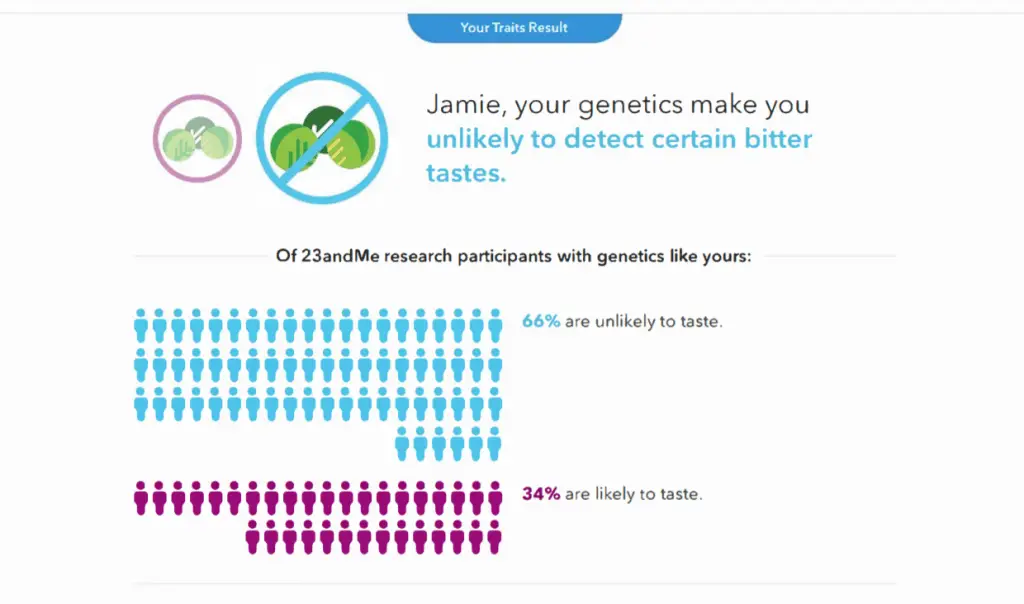
In Summary
Keep in mind that the 23andMe DNA test is one of many available home genetic testing variants; it’s important to choose a test that truly accommodates your priorities.
Related: Does 23andme Tell You Your Blood Type?, Is 23 and Me Accurate?, How old do you have to be to do 23andme?
Q: What is 23andMe?
A: 23andMe is a company that offers DNA testing services. They provide both ancestry and health-related genetic testing.
Q: What does 23andMe offer?
A: 23andMe offers various products and services, including ancestry testing, health testing, and a combination of both.
Q: How does the ancestry test work?
A: The ancestry test provided by 23andMe analyzes your DNA to determine your genetic heritage and provides you with detailed ancestry results.
Q: What can I learn from the health test?
A: The health test offered by 23andMe can provide you with information about genetic variants associated with certain health conditions, including your risk of developing them.
Q: How do I take the 23andMe test?
A: To take the 23andMe test, you need to order a kit from their website. The kit will include instructions on how to provide a saliva sample which you will then send back to the company for analysis.
Q: Can 23andMe provide a health report?
A: Yes, 23andMe provides a health report that includes information about genetic variants associated with various health conditions, such as Parkinson’s disease and Alzheimer’s disease.
Q: What can I expect from the ancestry results?
A: The ancestry results from 23andMe can provide you with insights into your genetic heritage, including percentages of ethnicities and potential matches with other individuals who share DNA with you.
A: Yes, you have the option to share your DNA results with other family members through your online account on the 23andMe website.
Q: Does 23andMe offer a live chat support?
A: Yes, 23andMe provides live chat support on their website. You can reach out to their customer support team for any questions or concerns you may have.
Is Nebula Genomics a Better Option Than 23andMe for Genetic Testing?
nebula genomics: unbiased review & buyer’s guide focuses on comparing Nebula Genomics with 23andMe for genetic testing. It delves into the features, accuracy, privacy, and cost of both options. By providing an unbiased perspective, this review helps potential buyers make an informed decision about which service suits their needs best. Nebula Genomics offers a comprehensive and transparent approach, which sets it apart from other genetic testing providers.
Q: What are the risks associated with taking the 23andMe test?
A: The risks associated with taking the 23andMe test are minimal. The test is non-invasive and only requires a saliva sample. However, it’s important to understand that the results may have implications for your health and wellbeing.
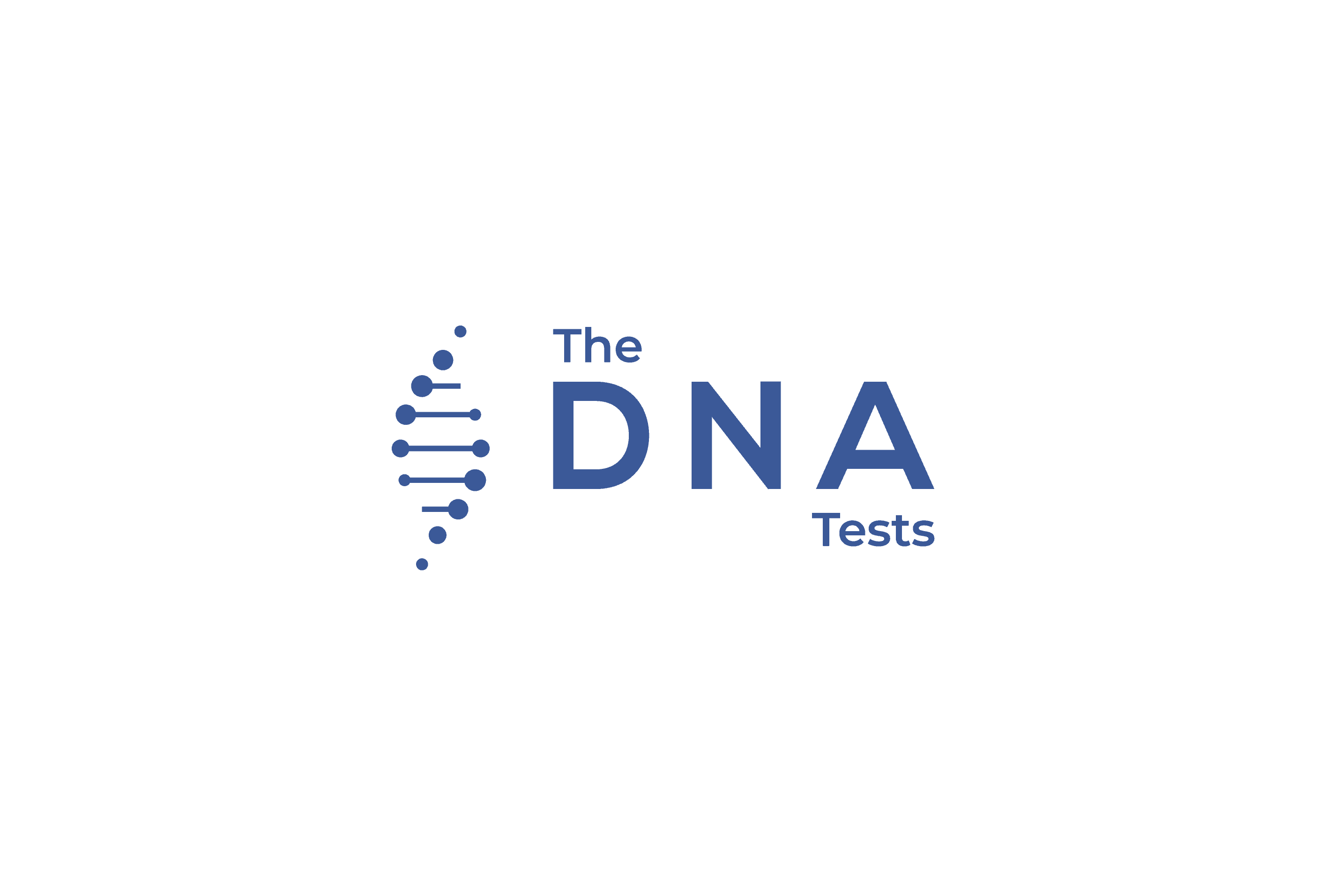
Throughout his career, Andras Kovacs has developed a deep understanding of DNA and its applications in genealogy and genetic testing. He has helped thousands of individuals uncover their ancestral heritage, using cutting-edge DNA analysis to trace family lineages and reveal connections across generations.

